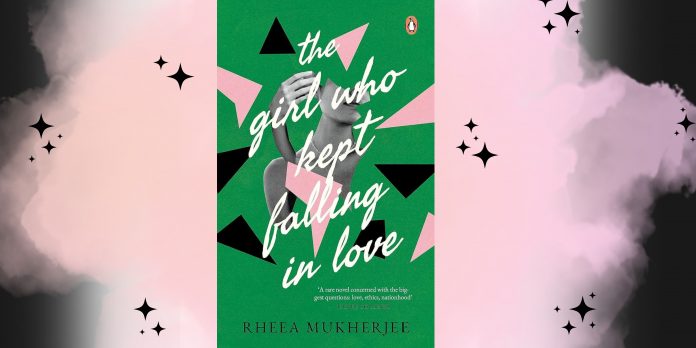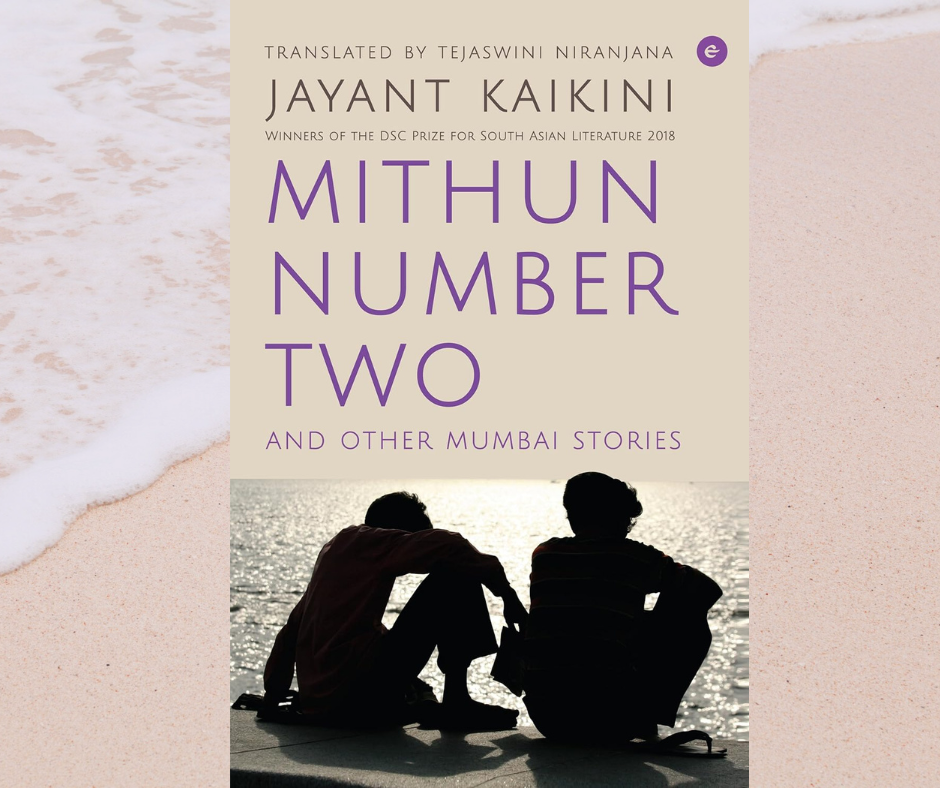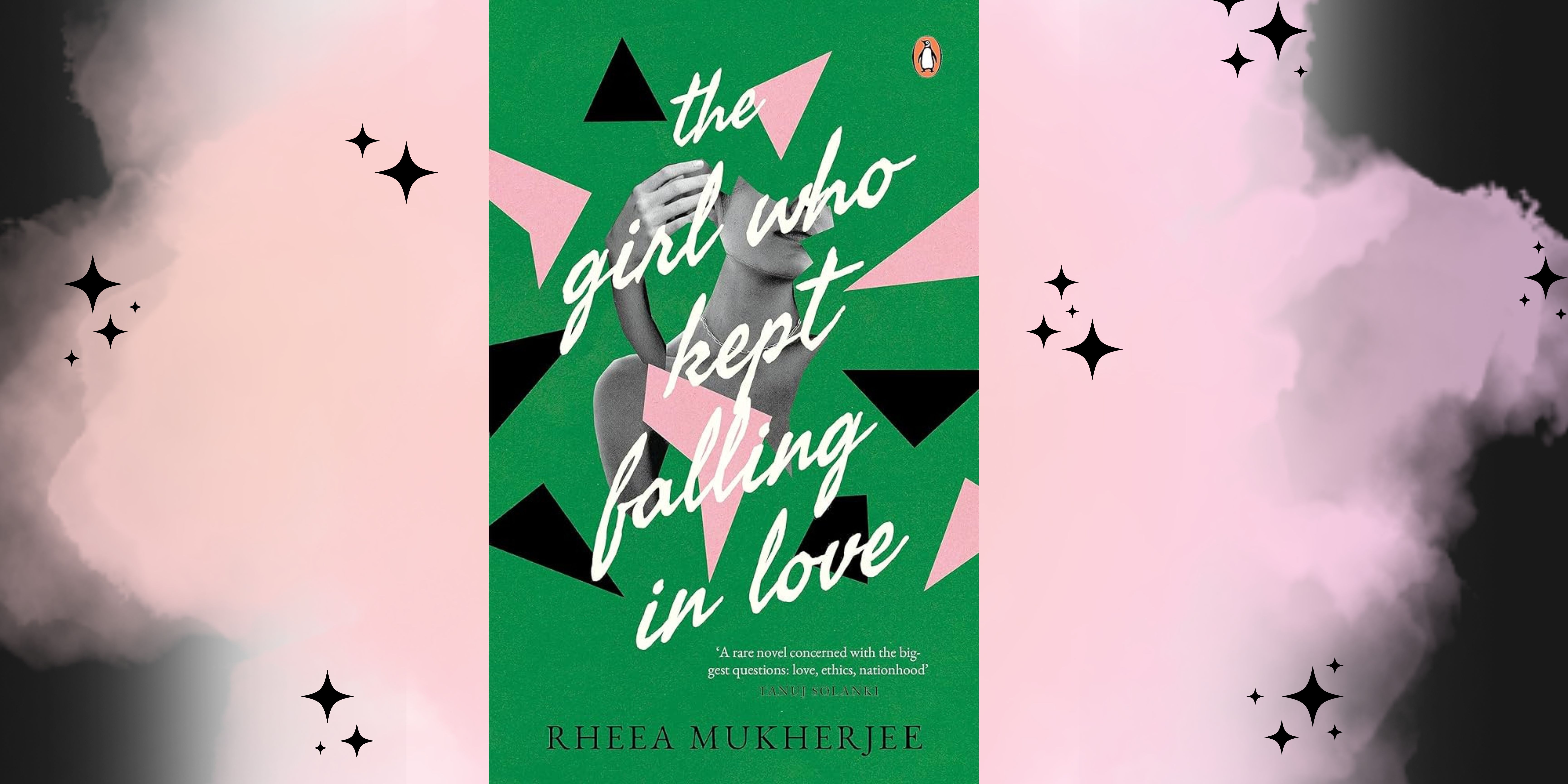The Girl Who Kept Falling In Love
by Rheea Mukherjee
Publisher: Penguin (2023)
‘The Girl Who Kept Falling In Love’ is essentially the collage of the many fragments of the protagonist Kaya, which she is desperately trying to put together. As we delve deeper into the novel, we may be shocked or surprised to find the reflection of our own or women whom we know, in the same fragments of mirror. What may seem to the reader as the personal journey of Kaya (initially), swiftly digresses into the political extrapolations of a nation and its people. As they say, the personal is the political ! The two seemingly unrelated themes converge and diverge on and off throughout the text.
It is no surprise that Rheea Mukherjee, herself a mental health explorer, chose to take the readers through the many misleading paths of the mind. The novel is attempted as the personal narration by Kaya who, like the writer, conjures with dual identities–that of a confused, troubled Indian upper-class woman desperately trying to do justice to her righteousness-seeking self, and that of an American Indian who loves the privileged comforts of her couch and cappuccino. The novel is Kaya’s struggle to thrive in love and its loss; and it is equally about India’s struggle to thrive in an inflammable political atmosphere. Kaya , invariably, feels as the writer herself whenever the book shifts to the latter theme as she strongly condemns the right-wing politics. The narrative, interspersed with short stories what Kaya describes as ‘urban myths’ (on which she writes a blog), is largely straight and simple as if to balance out the complexities of the themes.
The opening chapter gives us a glimpse of what to expect – it is a retrospection of Kaya on her own fragmented self. She philosophizes on how each of us create a better, more presentable version of our selves , desperately trying to believe that ‘that’ is the real self. In this way we try to live multiple lives in the psyches of different people who have different perceptions about us (depending upon the versions created by us). The first of the four urban myths titled ‘The Perfectly Polite Neighbours’ belongs to this chapter and it narrates Kaya’s own experience of her past neighbours. She takes you into the curbed curiosities that we all may have about our neighbours, but forced to play ‘decent’ and ‘cultured’ enough to not give it all away. The shock of the unexpected revelation about the ‘throuple’ hits you on the face just as it does to Kaya. Three more such urban myths follow in between various chapters and speak to us about different twisted realities
Slowly, she takes you into her maze of relationships, love and torn identities. As we delve deep into the crevasse of her psyche, we understand how entangled all these are…Here we get to meet Milie,Kaya’s activist friend, against whom Kaya is measuring herself unknowingly. (This self-assessment later leads to a catastrophic set of events, the guilt of which almost destroys her). We see Milie rebelling against the atrocities of the government, staging protests and being targeted by the authorities. This gives her a heroic image which gets a clean culmination in the end of the novel when she gets arrested. Through one such protest, Kaya meets the love of her life(curiously named ‘A’ ). We are not really told why Kaya is drawn towards activism—is it because of the overpowering aura of Milie, or the need to be validated by ‘A’ , because her avenue was never really activism but writing. Nevertheless, we see her getting entwined more and more into activism and protests. As Kaya’s relationship with A unfolds before us, activism serves as a premise , background and a unifier. Meanwhile, Mukherjee also takes us through Kaya’s past searches for love, the culmination of these leaving her either in pain, distress or just freezing numbness. The most striking of them is her (almost)platonic and intense relationship with Anna. Kaya sails through the tranquil yet turbulent wave that was Anna, her unique sensibilities, non-binary self which is devoid of any cocoons of gender, her bouts of depression and finally her suicide. It serves as a defense to the idea that love has nothing to do with gender.
It is interesting to note the repeated use of the word ‘woke’(derived from African-American vernacular English) throughout the novel; which means being alert to racial discrimination, gender/sexual inequality, and socio-political injustice.
One may feel curious why Mukherjee chose to name Kaya’s partner as ‘A’. We are told that A is a Muslim. It may as well be a reflection of Islamophobia against which the main characters are protesting—so ‘A’ could be a nonspecific Muslim (grammatically ‘a’ is an indefinite article used to introduce nonspecific countable nouns, if we can recollect our grammar classes) who no longer matter to the Hindutva driven government. A transforms into ‘Akash’ after he is baptized into a Hindu later in the story. He finally ‘gains’ an identity in the country.
The binary or a paradox in which Kaya (or Mukherjee herself) is stuck with peeps out in almost every chapter of the book—the fact that the protests by the privileged class is actually cushioned by their upper middle-class households. Kaya desperately tries to shrug off her urban upbringing which gives her the privilege to discuss politics in coffee shops, drive around in a car, complain about traffic and have a cook at home. But she eventually fails and she makes peace with it. We may feel that Mukherjee is desperately trying to justify Kaya’s acts by exposing the emotional imbroglio in which she is trapped. She (along with Akash) too succumbs to the ‘Is it worth all the pain’ syndrome when she finally decides that all that she wants is a happy trouble-free life with Akash.
Mukherjee uses her medium to reinforce her political ground, which is perfectly fine for anyone who has a strong one. But here, one may feel that this is too profound; almost like an article in a political journal, that one forgets that this is a novel. The writer voraciously showers her opinions and protests against the government through the characters, which almost slips into a sort of hate speech by itself. The reader may tend to lose track and get distracted whenever Mukherjee attempts this.
However, Mukherjee has beautifully captured the depth of multiple emotions and definitely has the reader walking beside her; and the novel is much more than its title










RELATED ARTICLESMORE FROM AUTHOR
Mithun Number Two and Other Mumbai Stories
Can’t
Minor Disturbances at Grand Life Apartments